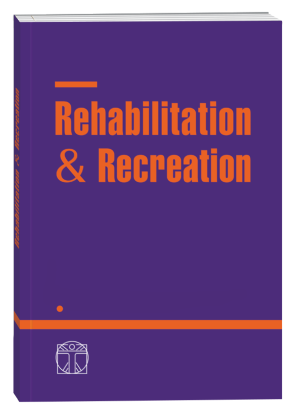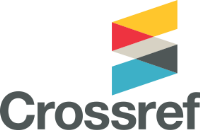SUITABILITY OF THE “QUALITOUCH ACTIVITYINDEX” AS A QUALITY CONTROL TOOL TO MONITOR PHYSIO- AND EXERCISE THERAPY
DOI:
https://doi.org/10.32782/2522-1795.2024.18.4.4Keywords:
patient reported outcome measures, quality management, health care outcomes, musculoskeletal disorders, physical therapyAbstract
Background. From the patient’s perspective, achievement of expected therapy goals and satisfaction with the treatment are important parameters to evaluate the quality of the therapeutic pathway. The “QUALITOUCH Activityindex” (AI) was developed due to the lack of an instrument that measures both aspects at the same time. In addition to the achievement of therapy goals and satisfaction with therapy, the “AI” measures also the degree of pain/discomfort and the subjective activity limitation in everyday life and leisure activities. Objectives. The aim of this study was to compare the results obtained by the “AI” with those obtained by the European Quality of Life Questionnaire (EQ-5D-3L) in patients suffering from musculoskeletal diseases. Method. From a total of 57 participants anonymized data sets were evaluated retrospectively. Through the treatment-accompanying data collection, the “AI” was collected digitally before the first therapy session. The “EQ-5D-3L” data was gathered digitally within the next 24 hours. Data analyses was conducted using Spearman rank order correlation coefficients (rho), Cohen’s kappa parallel reliability (convergent validity) and Cronbach alpha (internal consistency). Results. Strong and statistically significant correlations were found for the items “Occupational Activity” (AI) and “General Activities” (EQ-5D-3L) as well as “Healthstatus” of both questionnaires (rho = 0.59 and rho = 0.64; both p < .001). Parallel reliability showed medium agreements for “pain” (k = 0.44), “work” (k = 0.48) and “health status” (k = 0.64). The internal consistency was acceptable (Cronbach alpha = 0.73). Conclusions. The “AI” seems to have the potential to be used as an easy-to-use instrument for the assessment of activity limitations in everyday life, leisure and work in patient’s suffering from musculoskeletal diseases. Due to the slightly differing items, response dimensions and the fact that the data were not collected at the exact same time point, moderate correlation values can be explained.
References
1. Agarwal, A., Pain, T., Levesque, J.-F., Girgis, A., Hoffman, A., Karnon, J., King, M.T., Shah, K.K., Morton, R.L., & Group, F. t. H. P. S. I. (2022). Patient-reported outcome measures (PROMs) to guide clinical care: recommendations and challenges. Medical Journal of Australia, 216(1), 9–11. https://doi.org/https://doi.org/10.5694/mja2.51355.
2. Braun, T., Rieckmann, A., Weber, F., & Gr¸neberg, C. (2018). Current use of measurement instruments by physiotherapists working in Germany: a cross-sectional online survey. BMC Health Services Research, 18.
3. Bundesversammlung der Schweizerischen Eidgenossenschaft. (2020). Bundesgesetz über die Forschung am Menschen (Humanforschungsgesetz, HFG) Retrieved from: https://www.admin.ch/opc/de/classifiedcompilation/20061313/index.html.
4. Cohen, J. (1992a). A power primer. Psychological bulletin, 112(1), 155.
5. Cohen, J. (1992b). Statistical Power Analysis. Current Directions in Psychological Science, 1(3), 98–101. https://doi.org/10.1111/1467-8721.ep10768783.
6. de Vet, H.C.W., Terwee, C.B., Mokkink, L.B., & Knol, D.L. (2011). Measurement in Medicine: A Practical Guide. Cambridge University Press. https://doi.org/10.1017/CBO9780511996214.
7. Deutsches Institut für Medizinische Dokumentation und Information (DIMDI). (2018). ICD-10-GM Version 2019, Systematisches Verzeichnis, Internationale statistische Klassifikation der Krankheiten und verwandter Gesundheitsprobleme, 10. Revision, Stand: 21. September 2018. Retrieved from: https://www.dimdi.de/dynamic/de/klassifikationen/downloads/?dir=icf.
8. Fleiss, J.L., Levin, B., & Paik, M.C. (1981). The measurement of interrater agreement. Statistical methods for rates and proportions, 2(212–236), 22–23.
9. Gagnier, J.J., Lai, J., Mokkink, L.B., & Terwee, C.B. (2021). COSMIN reporting guideline for studies on measurement properties of patient-reported outcome measures. Quality of life research: an international journal of quality of life aspects of treatment, care and rehabilitation, 30(8), 2197–2218. https://doi.org/10.1007/s11136-021-02822-4.
10. Griefahn, A., Wolf, E., & Zalpour, C. (2020). Wie kann die Dokumentation in der Physiotherapie durch die Digitalisierung effektiver und effizienter werden? Eine Delphi-Studie. Physioscience, 16. https://doi.org/10.1055/a-1113-6688.
11. Group, T.E. (1990). EuroQol-a new facility for the measurement of health-related quality of life. Health Policy, 16(3), 199–208.
12. IBM. (2020). SPSS Statistics for Windows. In (Version 27.0.0.0, 64-Bit-Version) Armonk, NY: IBM Corp.
13. Kirrstetter, A., Brenig, C., Gengenbacher, M., Meier, B., Ott, A., & Theiler, R. (2017). Erfahrungen bei der Messung der Ergebnisqualität in der interventionellen Schmerztherapie. Der Schmerz, 31(2), 131–138.
14. Leiner, G., Pallauf, M., Müller, G., & Seeberger, B. (2021). Anwendung von Assessments in der Physiotherapie–eine empirische Studie in Österreich. physioscience, 17(04), 150–160. https://doi.org/10.1055/a-1162-7372.
15. Lützner, C., Lange, T., & Lützner, J. (2017). Grundlagen patientenberichteter Ergebnisse (Patient-reported Outcome – PRO). Orthopädie und Unfallchirurgie up2date, 12(06), 661–676. https://doi.org/10.1055/s-0043-110864.
16. Myers, A., & Sickles, T. (1998). Preparticipation sports examination. Primary care, 25, 225–236. https://doi.org/10.1016/S0095-4543(05)70334-1.
17. Niemann, S., Achermann Stürmer, Y., Ellenberger, L., & Meier, D. (2023). Statistik der Nichtberufsunfälle und des Sicherheitsniveaus in der Schweiz. Bern: BFU, Beratungsstelle für Unfallverhütung. https://doi.org/10.13100/BFU.2.505.01.2023.
18. Pielok, M., & Theiler, R. (2017). Quality Assurance Study on (Physio) therapy According To the Spiraldynamik® Concept for Treating Patients with Knee Complaints. Physiother Rehabil, 2(129), 2.
19. Rabin, R., & Charro, F. d. (2001). EQ-SD: a measure of health status from the EuroQol Group. Annals of Medicine, 33(5), 337–343. https://doi.org/10.3109/07853890109002087.
20. Ren, L., Zhang, X., Li, Z., Tang, H., & Theiler, R. (2018). Monitoring the Time Course of Disability through a Self-Assessment Instrument “Activityindex”(IA) in RA Patients. J Rheum Dis Treat, 4, 065.
21. Roth, P., Gengenbacher, M., & Theiler, R. (2012). Activityindex, ein internetbasierender Patientenfragbogen zur Verlaufsdokumentation von Rückenschmerzen (Low Back Pain)–Vergleich des „Activityindex“ und des SF-12 in einer Pilotstudie. Physikalische Medizin, Rehabilitationsmedizin, Kurortmedizin, 22(03), 138–141.
22. Schermelleh-Engel, K., & Werner, C. (2008). Methoden der Reliabilitätsbestimmung. In H. Moosbrugger & A. Kelava (Eds.), Testtheorie und Fragebogenkonstruktion (pp. 113–133). Springer Berlin Heidelberg. https://doi.org/10.1007/978-3-540-71635-8_6.
23. Sim, J., & Wright, C. C. (2005). The Kappa Statistic in Reliability Studies: Use, Interpretation, and Sample Size Requirements. Physical therapy, 85(3), 257–268. https://doi.org/10.1093/ptj/85.3.257.
24. Theiler, R. (2015). Outcome-Messung in der Praxis. Der Activityindex monitorisiert Schmerz und Einschränkung im Alltag. med&move 01/2016, Article 16993. https://www.rosenfluh.ch/16993.
25. Weinhold, W. (2008). Qualitätssicherung in der Physiotherapie: Evaluation von Performance-Tests.
26. Weldring, T., & Smith, S. M. (2013). Patient-Reported Outcomes (PROs) and Patient-Reported Outcome Measures (PROMs). Health Serv Insights, 6, 61–68. https://doi.org/10.4137/hsi.S11093 .
27. Zaugg, M., Baur, H.,& Schmitt, K.-U.(2022). Applying patient-reported outcome measures (PROMs) in physiotherapy: an evaluation based on the QUALITOUCH Activityindex. Archives of Physiotherapy, 12(1), 1–9.
Downloads
Published
How to Cite
Issue
Section
License

This work is licensed under a Creative Commons Attribution-NonCommercial-NoDerivatives 4.0 International License.












